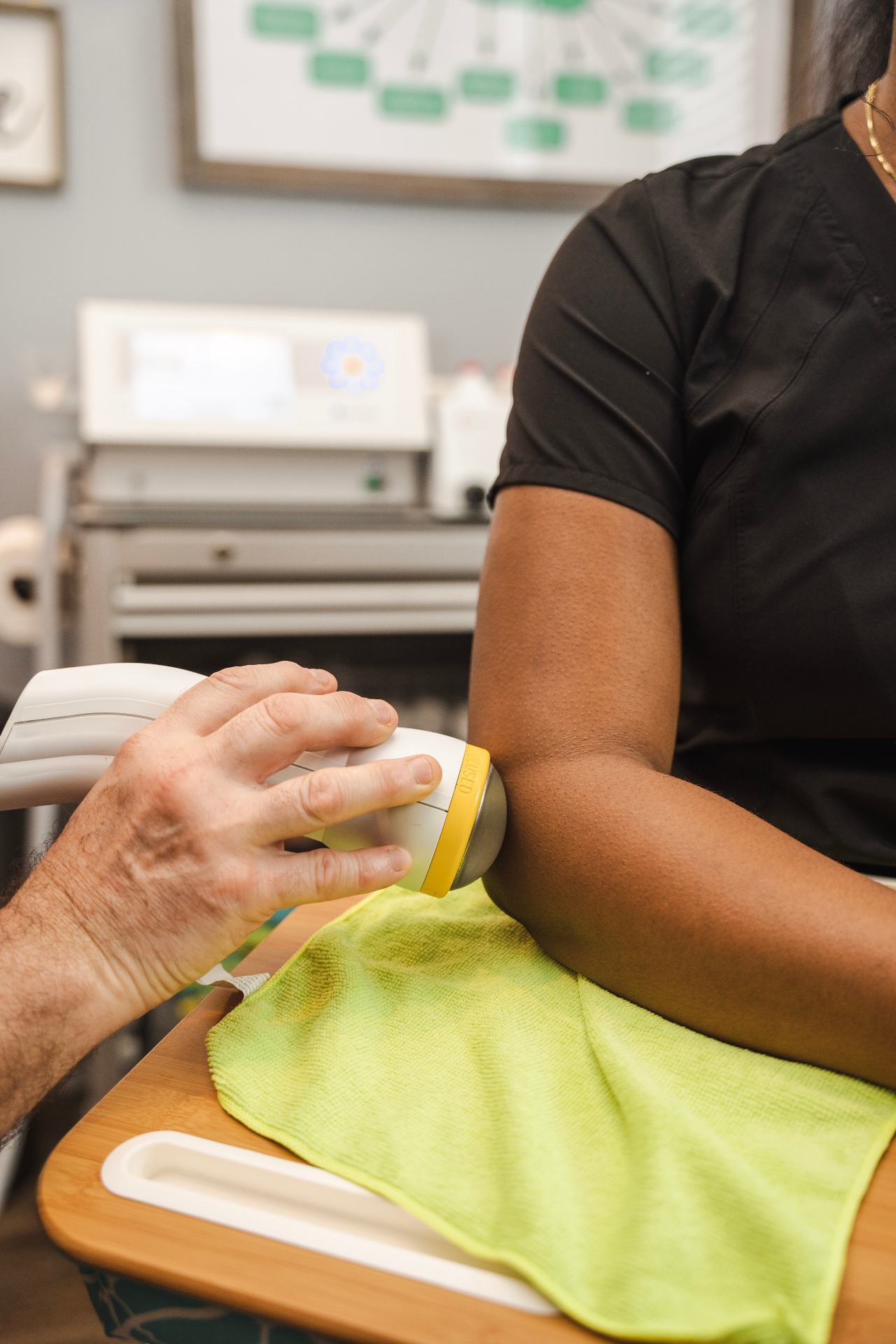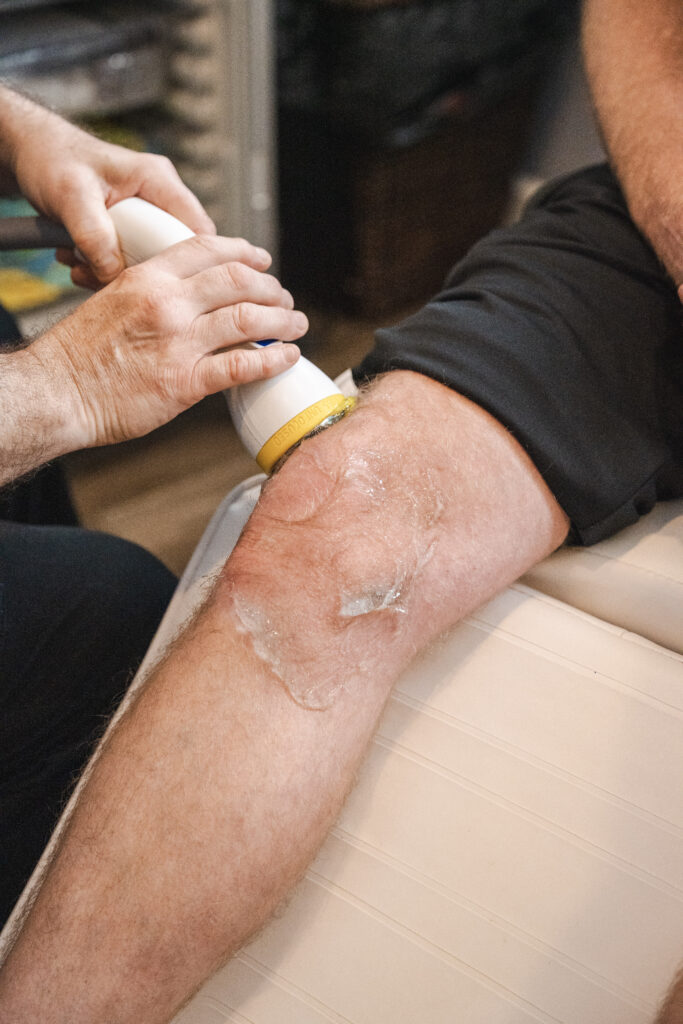Elbow pain can originate from a variety of sources, from repetitive motions to underlying medical conditions. Here are some of the most common causes of elbow pain:
- Tendonitis: Overuse, such as repetitive lifting or carrying, can cause inflammation or tears in the tendons around the elbow, leading to pain.
- Tennis Elbow or Golfer’s Elbow: These conditions are often caused by repetitive wrist and arm motions, leading to pain and tenderness on the outside or inside of the elbow, respectively.
- Arthritis: This degenerative joint disease can affect the elbow, causing pain and stiffness.
- Fractures or dislocations: Accidents, falls, or sports-related activities can lead to elbow injuries, causing pain.
- Medical conditions such as cubital tunnel syndrome or bursitis: These conditions can cause chronic pain in the elbow.
It’s important to note that these are just some of the most common causes of elbow pain. If you are experiencing knee pain, you can learn if your condition is suitable for treatment and try shockwave therapy with our New Patient Special.
Benefits of Shockwave Therapy for Elbow Pain
As a non-invasive treatment for elbow pain, shockwave therapy offers multiple benefits. This treatment method uses high-energy shock waves to initiate healing in the affected area. Here are some of the advantages of utilizing shockwave therapy for elbow pain:
Speedy Recovery
Shockwave therapy harnesses high-energy sound waves to stimulate the body’s natural healing mechanisms. In doing so, it can expedite the healing of damaged tissues, including tendons and muscles, providing relief to those suffering from chronic or recurring elbow pain.
Reduced Dependence on Medications
Many conventional treatments for elbow pain rely on medications that may have undesired side effects. Shockwave therapy is a medication-free alternative that can diminish the need for pain medication or other treatments. This makes it an attractive option for those who prefer non-pharmaceutical treatments.
Improved Quality of Life
Elbow pain can significantly affect one’s quality of life, hindering daily activities or recreational pursuits. Shockwave therapy can help alleviate pain and improve mobility, allowing patients to resume their usual activities and enhance their quality of life.
Non-Invasive and Safe
Unlike many elbow pain treatments, shockwave therapy is non-invasive and safe. It doesn’t require incisions or anesthesia, and carries a low risk of complications, making it a good option for those wanting to avoid more invasive treatments.
How Shockwave Therapy Works
Shockwave therapy is a non-invasive treatment that uses high-energy acoustic waves to stimulate the body’s natural healing response. Here’s how it functions:
What is a Shockwave?
Shockwaves are quick acoustic pulses that consist of a high-pressure surge followed by a comparatively lower-pressure trough. These phenomena are part of our daily life and can be produced by various sources such as supersonic aircraft, explosions, lightning, earthquakes, or any other event causing a change in air pressure.
How do Shockwaves Treat Elbow Pain?
A device is employed to generate and safely administer shockwaves to the affected area of the elbow. These shockwaves can foster healing at the cellular level, enhance blood supply, and trigger the body’s natural healing process.
Types of Shockwave Therapy
Though many types of shockwave therapy exist, the three most common are radial shockwave therapy (RSWT), focused shockwave therapy (FSWT), and acoustic wave therapy (AWT).
Radial Shockwave Therapy makes use of a handheld device to transmit pressure waves to the surface of the skin. This therapy is routinely applied to manage conditions such as plantar fasciitis, Achilles tendinopathy, and tennis elbow. Nonetheless, when it comes to deeper tissue injuries, its effectiveness might be somewhat restricted, necessitating several sessions for maximum benefits.
Focused Shockwave Therapy involves a machine that aims high-intensity shockwaves right at the problem area. This method is frequently utilized for chronic issues such as plantar fasciitis and bone fractures that are slow to heal. Some patients might find the procedure slightly uncomfortable, so it’s often necessary to adjust the intensity level according to individual tolerance.
Acoustic Wave Therapy entails the use of a device that administers low-intensity shockwaves to the problem area. This therapy is commonly employed to boost blood circulation, mitigate pain and inflammation, and facilitate tissue healing. It has been utilized for concerns like erectile dysfunction and cellulite. However, the low-intensity shockwaves may not be adequate for treating certain conditions effectively.
Unfocused Shockwave Therapy delivers high-intensity shockwaves that can reach a wider and deeper tissue area (7cm x 12cm) as compared to focused shockwaves (1cm x 12cm) or radial waves (2cm x 2cm). SoftWave for elbow pain is the ONLY available unfocused shockwave treatment in the United States. Unfocused shockwaves have the ability to effectively treat the same conditions as traditional focused shockwave therapy, but offer enhanced relief for severe joint and muscle issues such as heel, ankle, or lower back pain. Furthermore, unfocused shockwave therapy may require fewer sessions than radial or focused shockwave therapies.






